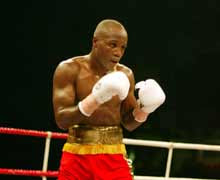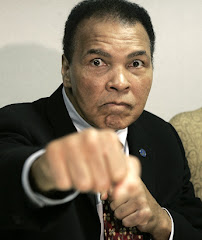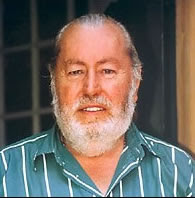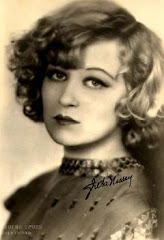LE PREMIER 'PARKINSON BOXING CLUB' OUVRE A IXELLES EN BELGIQUE
Bea DIALLO

En Belgique
Renconte avec Bea Diallo
Lancement prévus
Le 11/04
Au départ, une histoire de persévérence et d'amitié.
D'abord impuissant, il décide ensuite très vite de réagir, déterminé déterminé à sauver son ami. Mais comment ? La boxe est le seul domaine qu'il connaisse vraiment. Qu'à cela ne tienne ! Avec énormément de persuasion et de patience, Vince parvient à convaincre Scott à s'entraîner avec lui.
Un gigantesque défi. Il lui répéte sans cesse : n'arrête pas, continue, c'est la maladie que tu combat. Au fil des mois, Scott repris courage et six mois après, les résultats étaient là ! Moins de tremblements. Plus de mobilité. Plus de précision dans les gestes. Une démarche plus dynamiqe. Bref, le retour de la confiance en soi.
Les médias s'emparent de cette histoire. Les journaux, les chaine de télévision.
Les neurologues sont d'accord
Les exercices musculaires permettent de retrouver la mobilité et de ralentir la progression de la maladie de Parkinson. Les exercice obliger aient les cellules nerveuses encore actives à augmenter leur efficacité et, donc, à augmenter la mobilité des patients. Le Dr Chan de l'Université d'Alberta, travaille pour déterminer jusqu’à quel point on peut stimuler ces cellules avec des séances d’entraînementde plus en plus intenses. (à suivre
Ixelles (Bruxelles 1040). Un ensemble d'exercices, physiques et mentals, empruntés aux arts martiaux et aux sports de combat. C'est aussi une philosophie. Un mode de vie. Un état d'esprit au quotidien. Il qui s'adresse spécialement aux parkinsoniens nouvellement diagnostiqués ou toujours en phase 'lune de miel'.
Les neurologues insistent sur l'importance d'exercices physiques au quotidien dans la vie des parkinsoniens. Natation, marche, danse, yoga, tai-chi, golf, jardinage...
Bien que n'ayant aucun effet curatif, les activités sont primordiales pour maintenir un certain bien-être physique et mental.)
TITRE
LES ARTS MARTIAUX CPMME MEDECINE PREVENTIVE
Des séances d'entraînement aux arts martiaux faites au plus haut niveau de ses capacités et de ses compétences est le meilleur moyen de préventif prevent disease, as well as to stimulate positive changes in the body's natural healing systems.
Our current lifestyle does not challenge us to move, yet our biological need for physical movement is still the same as when time began. Martial arts training can strongly influence the function of most of the human organ systems and much of the chemistry of our brains and bodies. The changes brought about by martial arts training are dose responsive, but maybe not in the way you believe. In fact, twice as much is twice as good only up to optimal levels.
An additional factor may be technique. Taking into consideration the type and dosage of martial arts training, it affects the body and its systems in numerous positive ways. After about three weeks of true martial arts training, a wide range of physiological changes take place (improvements in blood sugar, blood pressures, brain neurotransmitter balance...
The brain and nervous system
Martial arts training brings about remarkable changes in brain chemistry. The concentrations of various neurotransmitters that are responsible for facilitation or inhibition of nerve impulse transmission in the central nervous system. Among the early changes seen when individuals engage in a martial arts training program are mood elevation, heightened energy levels, enhanced self-confidence and self-esteem, lower anxiety levels, resistance to depression and improved coping ability. Changes in blood pressure and heart rate, which are, to a large extent, mediated by the central nervous system, occur soon afterward. Heart rate is slowed, and hypertensive blood pressure is reduced toward normal.
Returning to the neurotransmitter connections with training, higher levels of serotonin and dopamine have been recorded following intense martial arts training. These would account for the mood elevation and antidepressant effects equal to those of regular aerobic exercise. Keep in mind that changes in GABA, endorphins and other neurotransmitters may well contribute to these psychological effects. There have been improvements in the physical capabilities of Parkinson's disease patients following six to eight weeks of martial arts training. (Dopamine levels are commonly low in people with Parkinson's disease.)
About the author:
Richard Hackworth is the author of many books about "Martial Arts Profits & Success".
He can be reached at www.kmaia-usa.org
Des témoignages sur place

by David Alan Beck (2007)
County Prosecutor Scott Newman, along with Vince Perez, began the "Rock Steady Boxing Gym", a not-for-profit organization that caters to those with Parkinson’s disease.
Newman knows firsthand not only about Parkinson’s, but also how a boxing workout can help alleviate the symptoms. At the age of 41, he was diagnosed with Parkinson’s disease. He lost control of his hands and could no longer type. Working from a voice-activated computer, Newman stayed in his apartment most of the time. “Parkinson’s is a really self-conscious disease. You don’t want to go out in public.”
But then he met a former Nebraska Golden Gloves Champion and practicing lawyer, Vince Perez. Perez asked Newman to work out with him — a boxing workout — and within three weeks, Newman’s symptoms decreased. He could sign his name; he could skip rope and do a regular boxing workout.
"I always believed that too much is just about right, when it comes to working out"
And now they want to pass on their knowledge to all who suffer from Parkinson’s. Perez states, “Our goal is to provide an environment that makes everyone feel welcomed, especially those with Parkinson’s. We want them to feel, not just comfortable, but confident. By being a part of our program, they can go out and live a day-to-day life in the real world.”
For Newman and those who attend the boxing classes, the workout, a mixture of cardio and strength training, alleviates the symptoms of Parkinson’s disease.
Follmar is convinced. “What we’ve seen here is nothing short of miraculous. One man has just regained the ability to clap his hands. These people work so much harder than anyone else in the gym. To see people who can’t even jump when they get here, four weeks later skipping rope like a pro is amazing.”
According to Follmar, the intense workout benefits the participants by raising their dopamine levels. “People with Parkinson’s lose dopamine. The workouts increase the dopamine levels in the brain, resulting in a lessening of the symptoms.”
They also believe that a boxing workout is the perfect workout.And, how effective, boxing training can be. “We think boxing works so well because it combines cardio and strength training without being boring.
Web : http://rocksteadyboxing.org
:::::::::::::
PARKINSONIENS CELEBRES

--A--
Muhammad Ali, Amerian boxer (1942)
Yasser Arafat, Palestinian politician (1929–2004)
-- B --
Margaret Bourke-White, American photographer (1904-1971)
Bernard Buffet, peintre français ( ??)
-- C --
Owen Chamberlain, American physicist (1920-2006)
Prince Claus, husband of Queen Beatrix of the Netherlands (1926-2002)
-- D --
Salvador Dalí, spanish artist (1904-1989)
-- F --
Michael J. Fox, American actor, (1961)
Francisco Franco, Spanish dictator (1892-1975)
-- G --
Reverend Billy Graham, American evangelist (1918)
--H--
George Roy Hill, Film director (1921-2002)
Adolf Hitler, German Dictator (1889-1945)
--I-J--
Alexander Issigonis, Car designer (1906-1988)
Ba Jin, Chinese writer (1904-2005)
Pope John Paul II, Polish Pope (1920-2005)
--K--
Deborah Kerr, British actress (1921-2007)
--M--
Eugene McCarthy, American politician (1916–2005)
--P --
Joseph Pasternak, American film director (1901–1991)
Enoch Powell, British politician (1912-1998)
--R--
Janet Reno, US politician (1938)
--S--
Leonid Shamkovich, Russian Chess grandmaster (1923-2005)
Walter Sisulu, South African freedom fighter (1912-2003)
-T--
Terry Thomas, British character actor (1911-1990)
Pierre Trudeau, Canadian politician (1919-2000)
--W--
George Wallace, former governor of Alabama (1919-1998)
Ed Weinberger, American furniture designer (1942)
-- X --
Deng Xiaoping, Chinese politician (1904-1997)
Mao Zedong, Chinese politician (1893- 1976)
2007 Viartis
============




